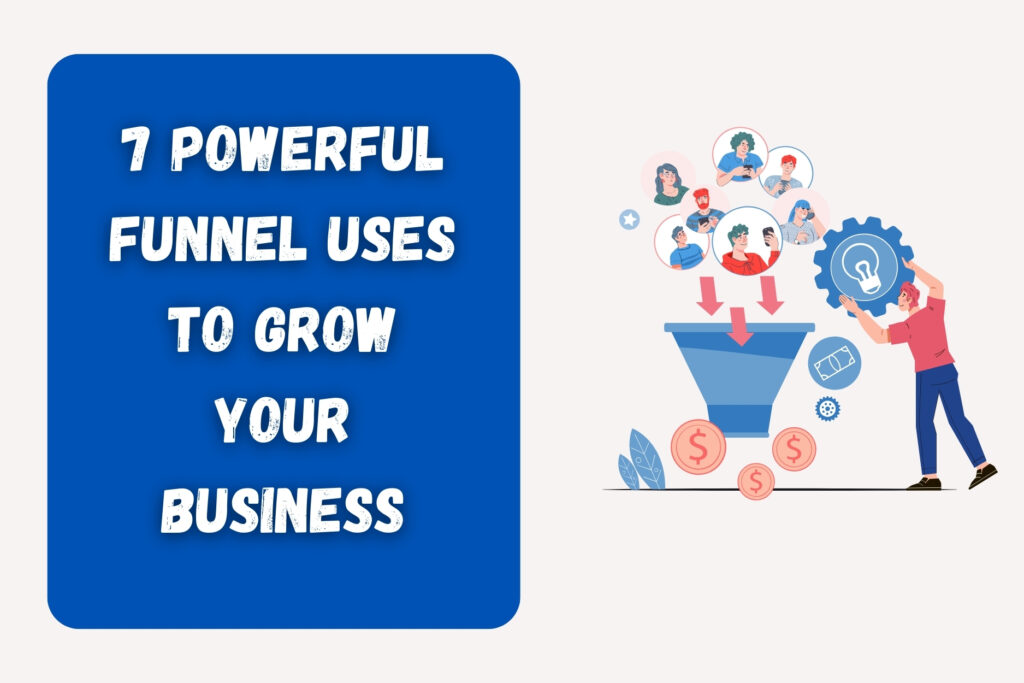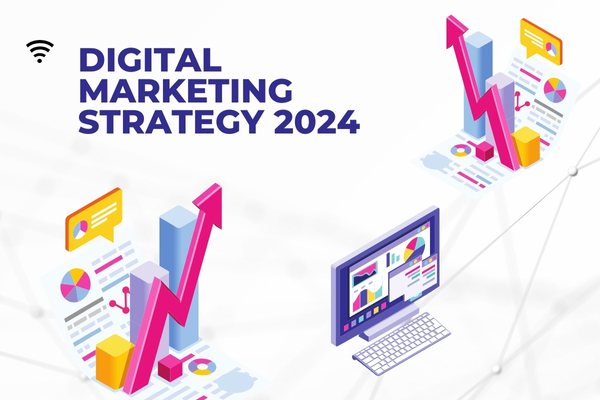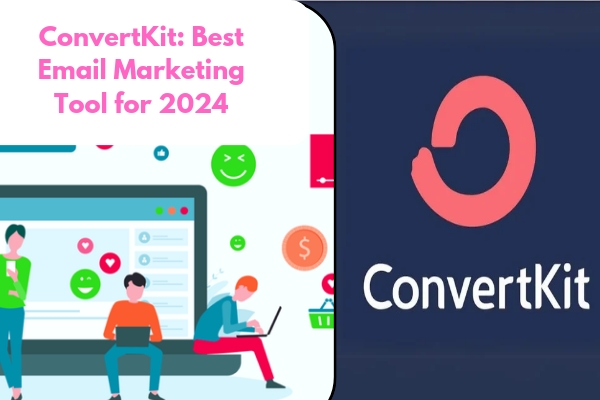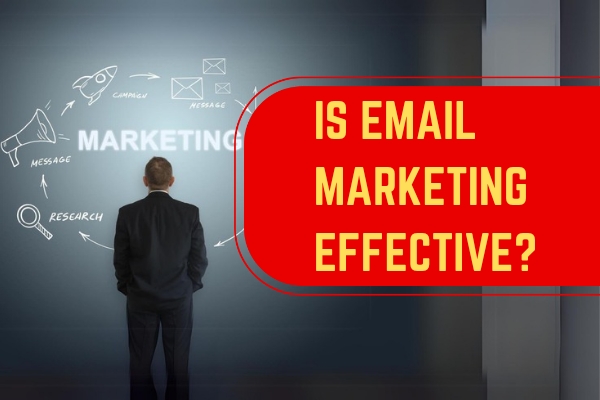Table of Contents
ToggleIntroduction
In today’s fast-changing world, running a business is not just about having a good product or service. It’s also about making sure you guide your customers step by step from knowing about your business to becoming loyal customers. This step-by-step process is where funnels come into play.
Funnels have become a crucial part of business success, especially in digital marketing. They help you plan and organize how you interact with your potential customers, leading them to take the right action. In this blog, I will share my personal insights on funnel uses and how they can help your business grow.
Let us explore how funnels work and how you can use them to get the best results.
Understanding the Concept of Funnels
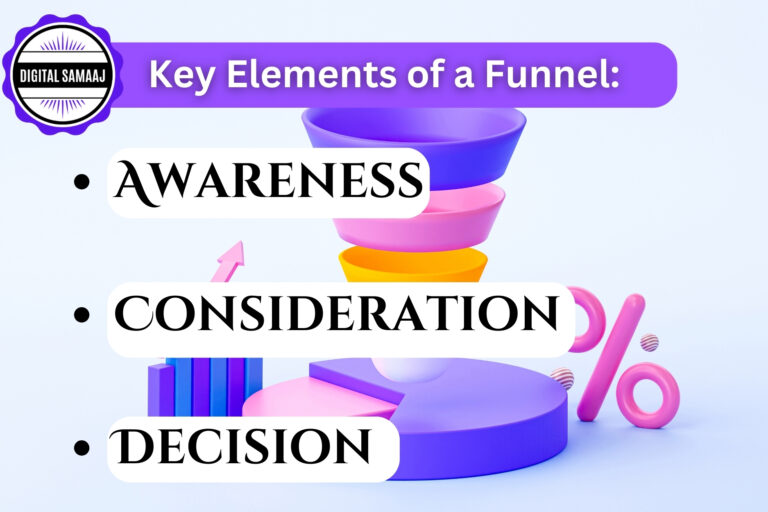
A funnel is like a path or a guide that helps you take a potential customer from the point of interest to making a decision. Imagine a funnel in real life — wide at the top and narrow at the bottom. The same idea applies in business. You attract a large number of people at the top, filter them through different stages, and finally convert the most interested ones into customers.
Key Elements of a Funnel:
- Awareness: This is where people first hear about your business. It could be through social media, ads, or word of mouth.
- Consideration: Here, potential customers start exploring more about your product or service.
Decision: Finally, they decide to purchase or take action.
7 Powerful Funnel Uses to Grow Your Business
Lead Generation Funnels
One of the most common uses of funnels is for generating leads. These funnels are designed to attract potential customers and collect their contact details, such as email addresses or phone numbers.
For example, you can create a landing page offering a free e-book, guide, or webinar. When people sign up, they become part of your funnel. This helps you build a database of interested customers whom you can follow up with.
A sales funnel is used to turn visitors into paying customers. It takes them through different steps, such as learning about your product, checking its features, and finally making a purchase.
For instance, if you sell courses, your funnel could start with a free webinar. In the webinar, you can explain the benefits of your course and invite participants to buy it. The step-by-step process ensures you don’t lose potential customers midway.
Read More: 15 Must Have Content Marketing Tools in 2025
Email Funnels
Email funnels help you maintain consistent communication with your audience. They are used to send automated emails to people who sign up for your newsletter or download a free resource.
For example, after someone downloads your free e-book, you can send a series of emails sharing tips, success stories, and finally an offer to purchase your paid product. This keeps your audience engaged and increases your chances of conversion.
Upsell and Cross-Sell Funnels
Funnels can also be used to increase the revenue you earn from each customer. After a customer buys one product, you can offer them a related product (cross-sell) or a higher-value product (upsell).
For instance, if someone buys your basic digital marketing course, you can offer them an advanced course at a discounted rate. This way, you provide more value to your customers while growing your business.
Webinar Funnels
Webinars are an excellent way to educate and convert your audience. Webinar funnels guide potential customers from signing up for the webinar to purchasing your product or service.
For example, you can run a free webinar on “How to Start Affiliate Marketing.” At the end of the webinar, you can introduce your detailed course on affiliate marketing and offer a special discount for attendees. This is a proven method to convert viewers into paying customers.
Membership Funnels
If you want to build a loyal community around your business, membership funnels can be very helpful. These funnels help you onboard members for your subscription plans or exclusive communities.
For example, you can offer a trial membership for your private coaching group. Once people experience the value, they are more likely to continue with a paid subscription.
Feedback and Survey Funnels
Lastly, funnels can also be used to gather feedback and understand your customers better. A survey funnel guides your audience to answer questions that help you improve your product or service.
For instance, after completing a course or using your service, you can send a survey asking about their experience. Based on the feedback, you can make necessary improvements and show your audience that you care about their opinion.
Benefits of Using Funnels in Business

Now that you know the uses of funnels, let’s look at why they are essential for your business:
- Saving Time and Effort: Funnels automate many processes, like collecting leads and sending follow-up emails.
- Improving Customer Experience: They guide customers smoothly through their journey, making it easier for them to take action.
Boosting Sales and Profits: Funnels ensure you don’t miss out on opportunities to convert potential customers.
Steps to Create a Funnel That Works
Creating a funnel may seem complicated, but it becomes simple if you follow these steps:
- Identify Your Goals: Decide what you want to achieve with the funnel. Is it to generate leads, sell a product, or collect feedback?
- Choose the Right Funnel Type: Select a funnel that suits your goal. For example, use a lead generation funnel for collecting emails and a sales funnel for selling products.
Set Up Funnel Stages: Break down the funnel into stages, such as awareness, consideration, and decision.
Tools You Can Use to Create Funnels
There are many tools available to help you create funnels. Some of the popular ones are:
- ClickFunnels: A user-friendly platform for building different types of funnels.
- Systeme.io: An affordable option for beginners.
- GetResponse: Ideal for creating email funnels.
These tools come with templates and features that make it easier for anyone to build a funnel.
Fill Details To Get Free E-Book “Master Your Market With 5P Formula” Now!!
Mistakes to Avoid While Using Funnels
While funnels are effective, there are some mistakes you should avoid:
- Neglecting the Target Audience: Always keep your audience in mind when creating a funnel. A mismatch can reduce your success rate.
- Overloading Funnels: Keep the funnel simple. Too many steps can confuse or frustrate your audience.
Not Monitoring Performance: Regularly check how your funnel is performing and make adjustments if needed.
Proven Tips to Make the Most of Your Funnels
- Testing Different Strategies: Experiment with different approaches to see what works best for your audience.
- Personalizing Funnel Content: Tailor your messages to suit the needs of different segments of your audience.
- Keeping the Funnel Simple: A simple and easy-to-follow funnel is more likely to succeed.
Conclusion
Funnels are a powerful tool that can take your business to the next level. Whether it is generating leads, selling products, or building a loyal community, funnels help you achieve your goals in an organized way. By using these funnel uses effectively, you can save time, boost profits, and provide a better experience for your customers.
If you want to learn more about using funnels and other digital marketing strategies in Hindi, visit my website Digital Samaaj and check out my courses. Start growing your business today with simple and practical methods!
Attend our free webinar!!

